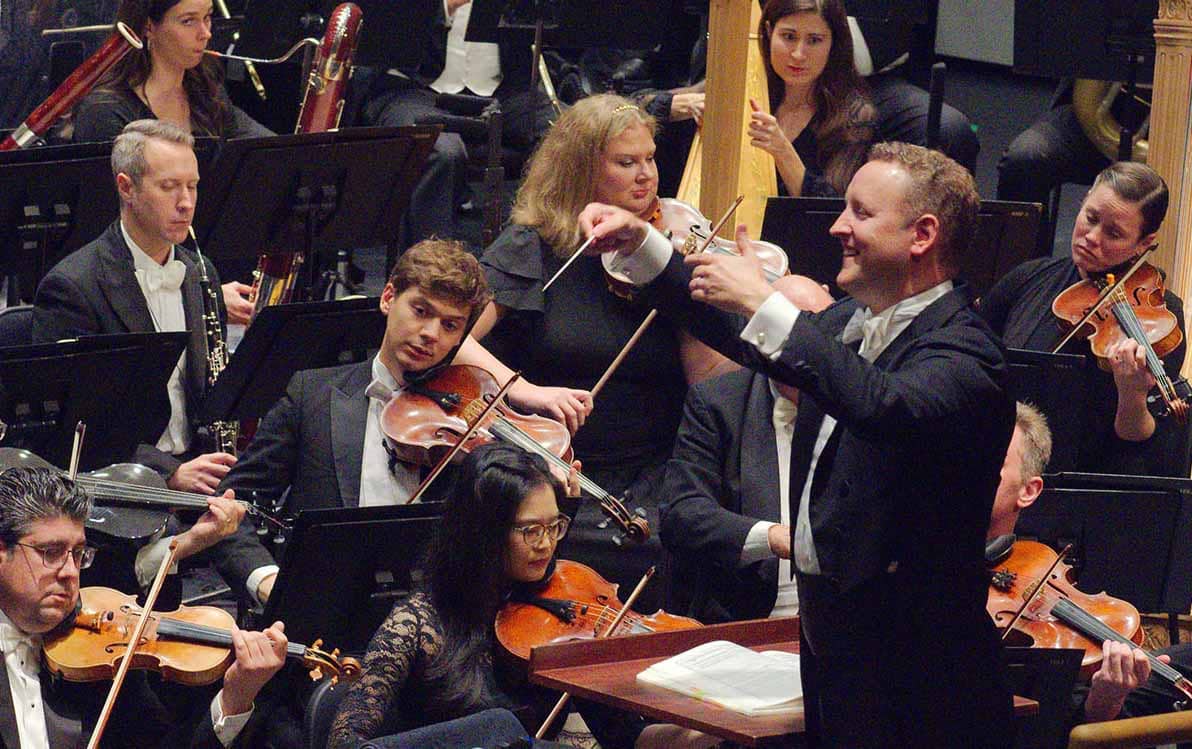Create
TFO’s Francis: Stravinsky work is no ‘darling bud of May’

Behind every great work of art, there’s always a story.
As Florida Orchestra music director Michael Francis explains it, the facts and legends behind Igor Stravinsky’s The Rite of Spring – the orchestra is performing the piece this weekend – add up to a whale of a tale.
The Russian composer was commissioned to write Le Sacre du printemps (its original French translation) for the Ballet Russes company. It premiered, with choreography, in Paris in 1913.
“No one had ever heard anything like this,” reports Francis. “This is not ‘Spring’ as we know. Spring in Russia is a violent cracking of the ice. And it’s loud and it’s shocking. Spring doesn’t appear gently as a darling bud of May. It snatches winter, crushes it with its fist and moves forward.”
Parisians did not immediately take to the music, nor to the avant-garde choreography by Vaslav Nijinsky.
“If you were there in May 1913 at that premiere, you didn’t know what to expect,” Francis says. “And then to hear this angular, dark pagan music, with this most extraordinary rhythmic vitality … it’s so physical that it actually had a profound effect on the audience.
“It’s famous for this … this riot. Of course, the fish gets bigger with every tale, but there was booing, there was hissing, there was shouting. Apparently, there were fisticuffs thrown – but we don’t know for sure.”
Today, The Rite of Spring is a well-known and much-loved part of the classical concert repertoire. “This combination of this powerful, brand new rhythmic harmonic language, the shocking story of pagan sacrifice, and the most incredible technical demands on the musicians, still gives this piece of music the power to shock us today,” Francis believes. “It is one of the most visceral experiences you could ever wish to hear.”
The Florida Orchestra concerts (Friday at the Straz Center, Saturday at the Mahaffey Theater, Sunday at Ruth Eckerd Hall) will pair a concert performance of The Rite of Spring with Tchaikovsky’s more traditional ballet score for Swan Lake, and Delights & Dances by contemporary composer Michael Abels, written for the 10th anniversary of the Sphinx Organization. The string-heavy piece includes elements of jazz, hip hop and even bluegrass.
“I think dance, sadly, is something that we’ve lost today,” Francis says. “Even in my childhood, in the late ‘80s, early ‘90s, we still had school discos. And if you wanted to go out in the evening, you always ended up dancing.
“And that’s not really the case now. This is the first time in history that we are no longer using dance as one of the main forms of coupling. A celebration. There’s much less dance going on, and I think that’s sad.”
So yes, this concert has a theme. “Swan Lake of course is the ultimate ballet, the ultimate beautiful story, all the famous set piece dances, the romance, the tragedy, the exotic dances from different countries. And so it’s the perfect summation of what ballet was until Stravinsky blew the world up with The Rite of Spring.”
Special event: At 7:30 p.m. Thursday at the Mahaffey Theater, Francis will discuss the construction, and the controversial history, of Stravinsky’s The Rite of Spring, with live demos. It concludes with a full performance of the work.
All details, and tickets, can be found here.







